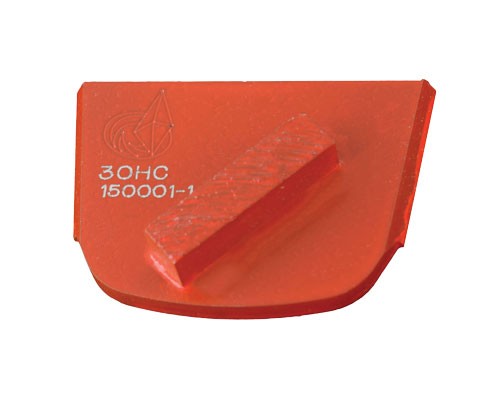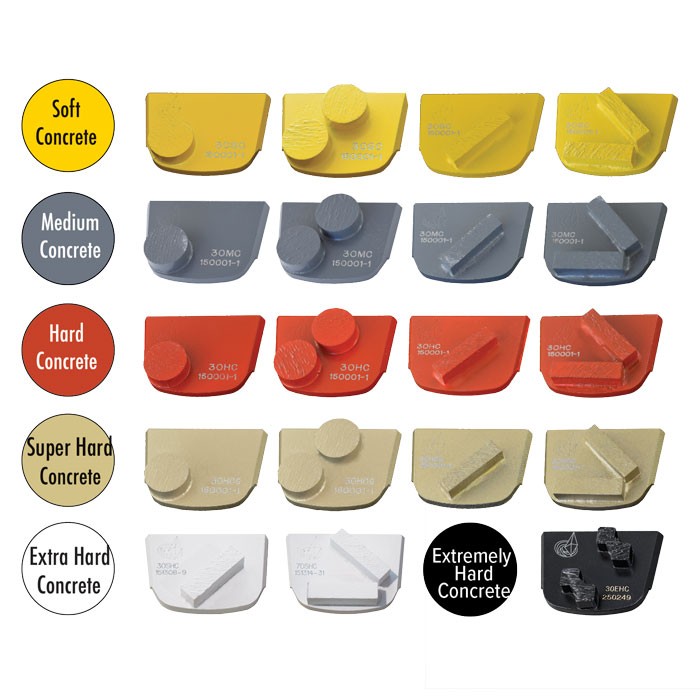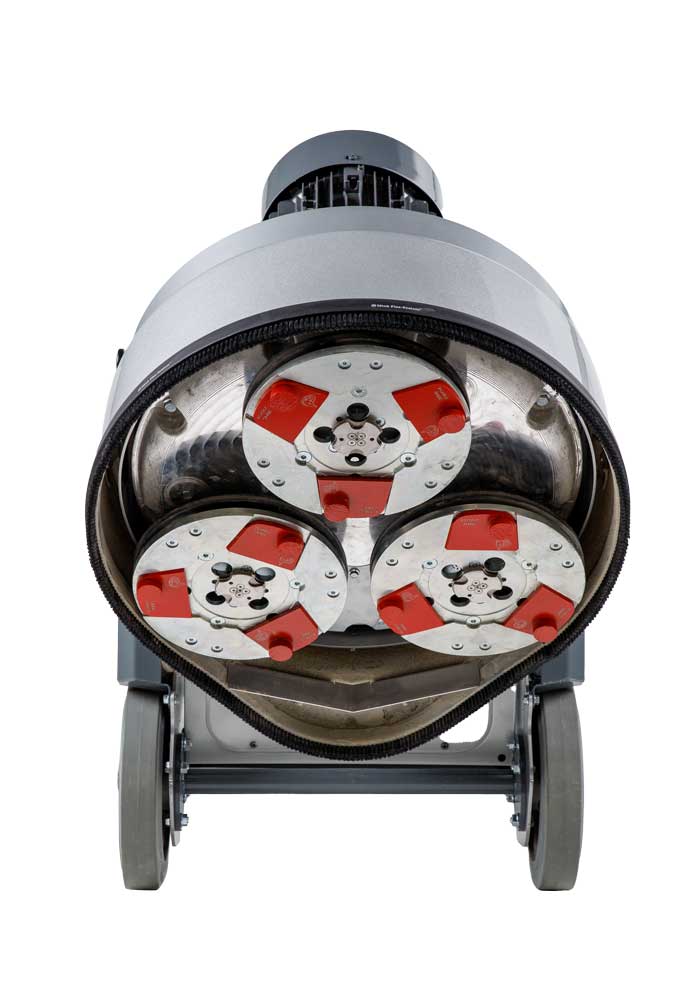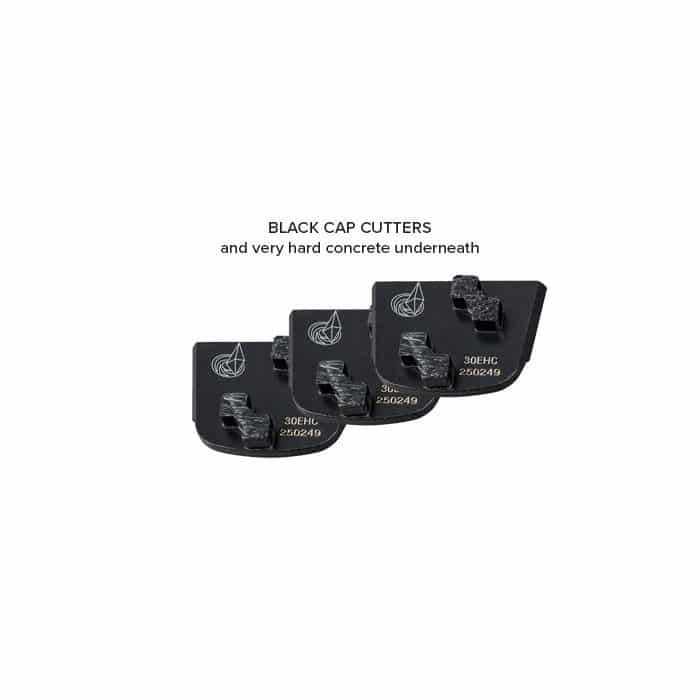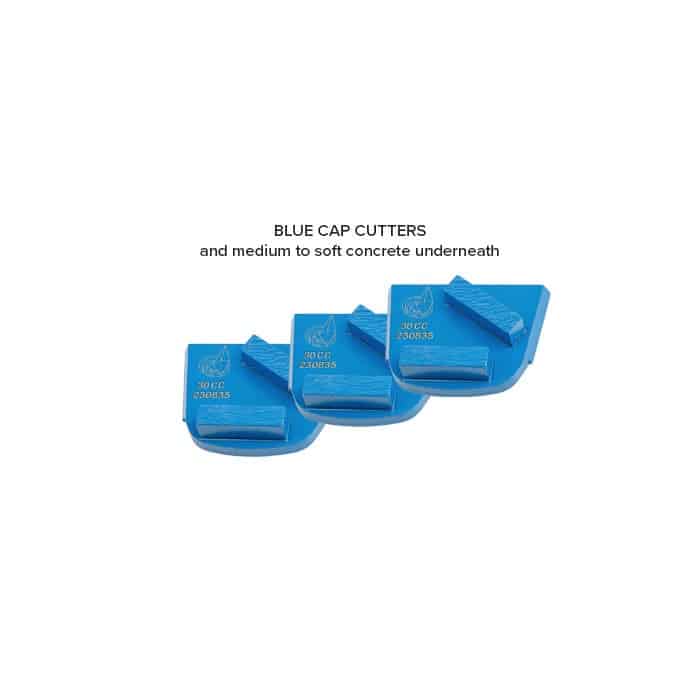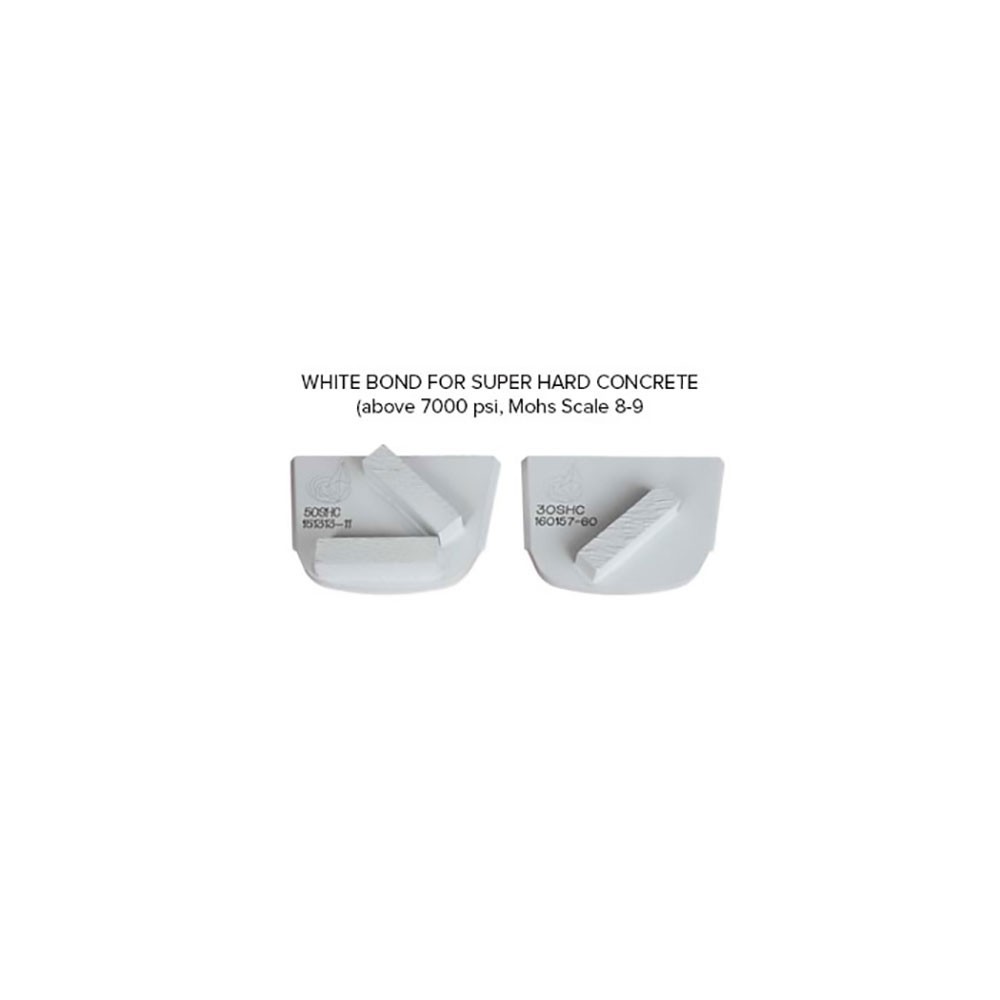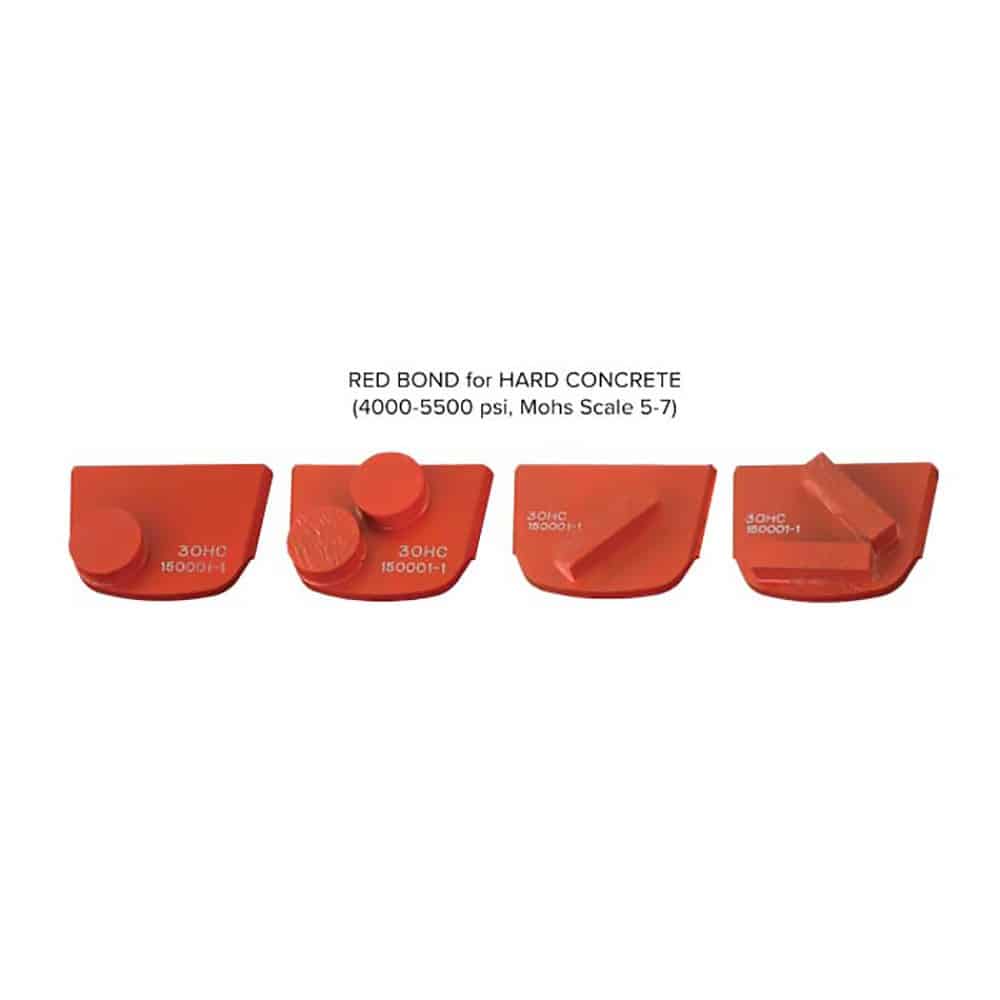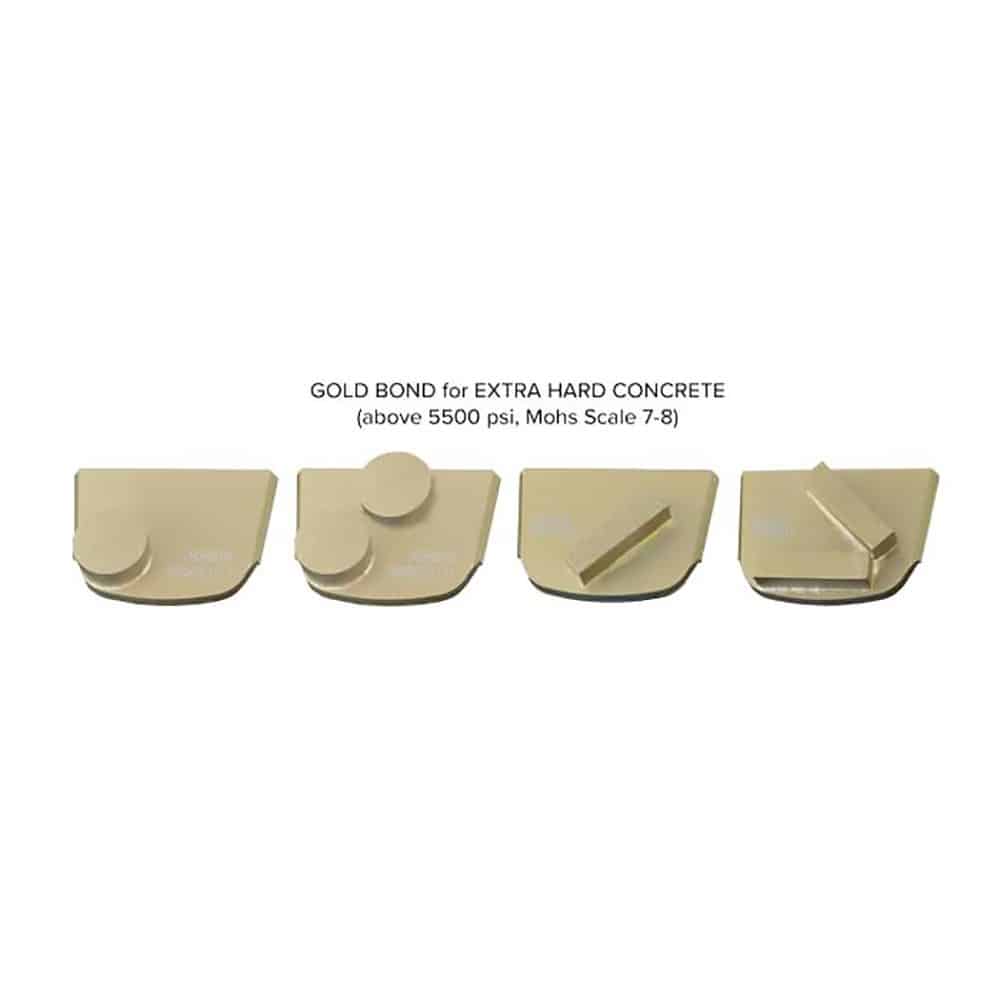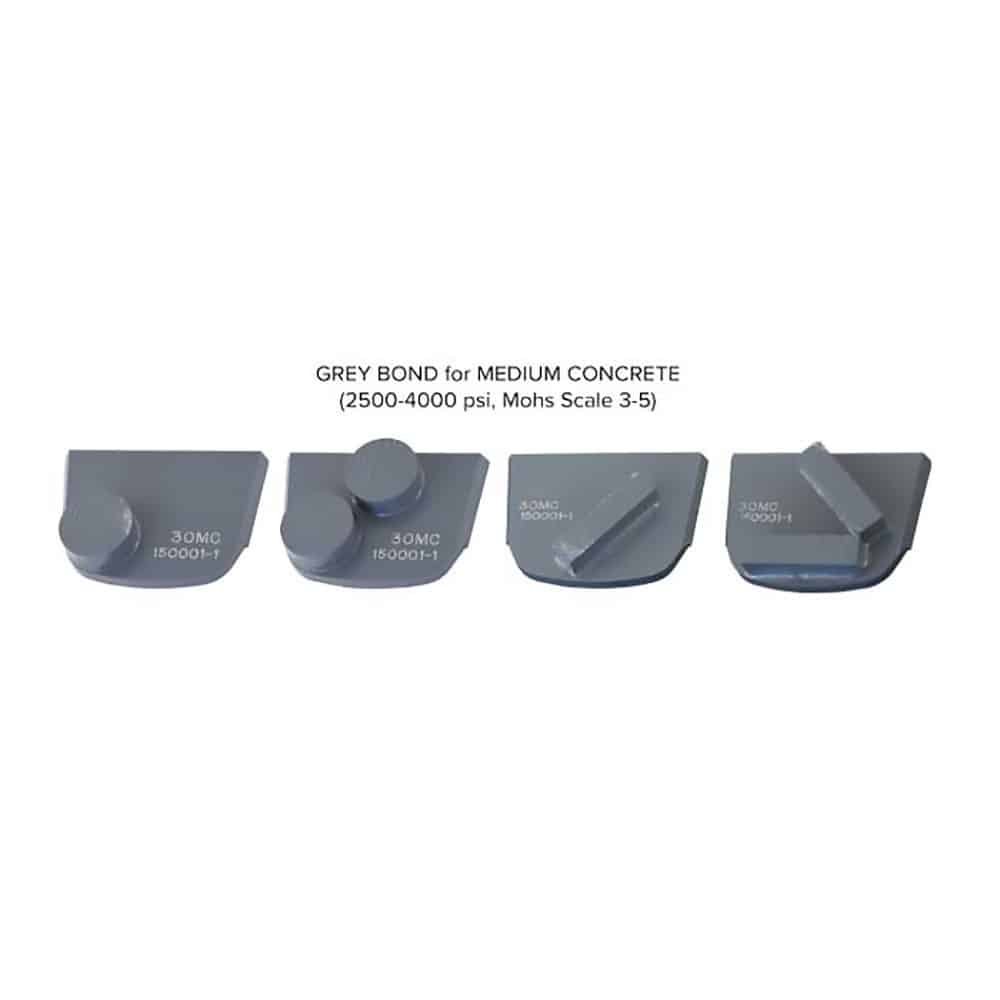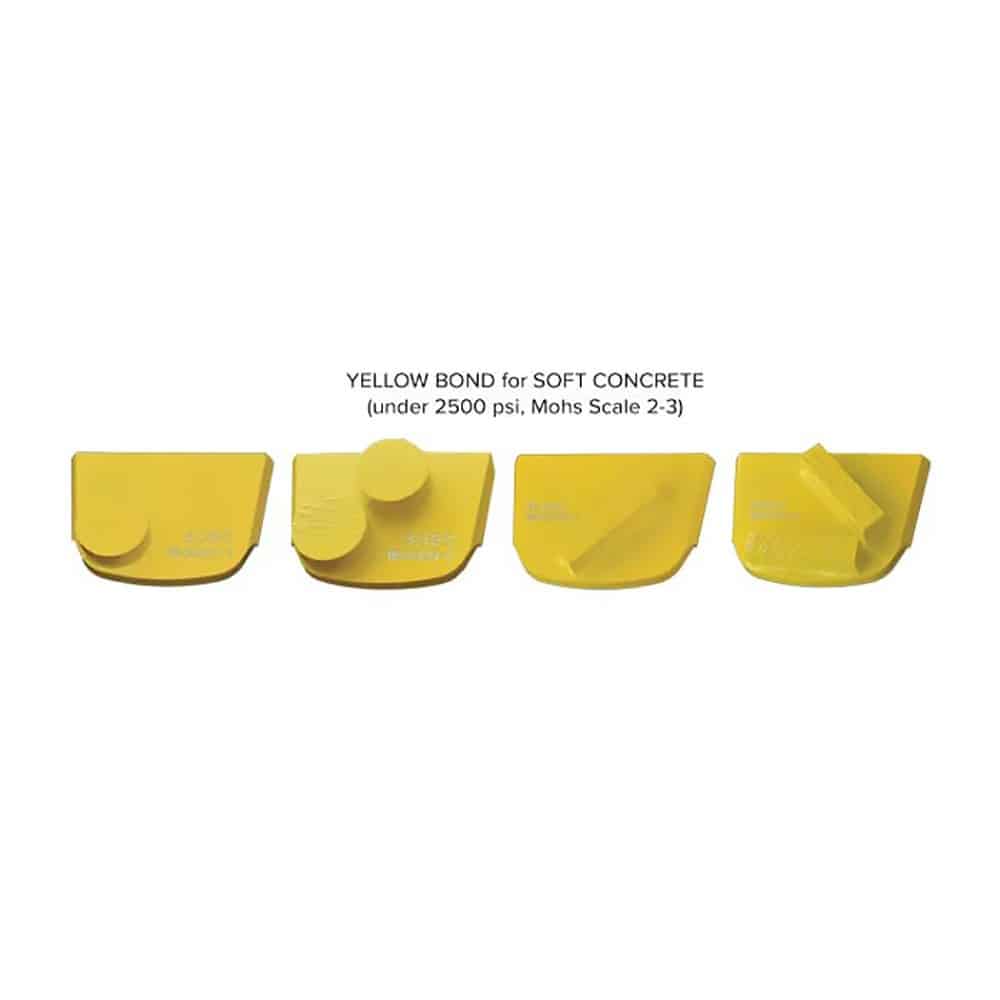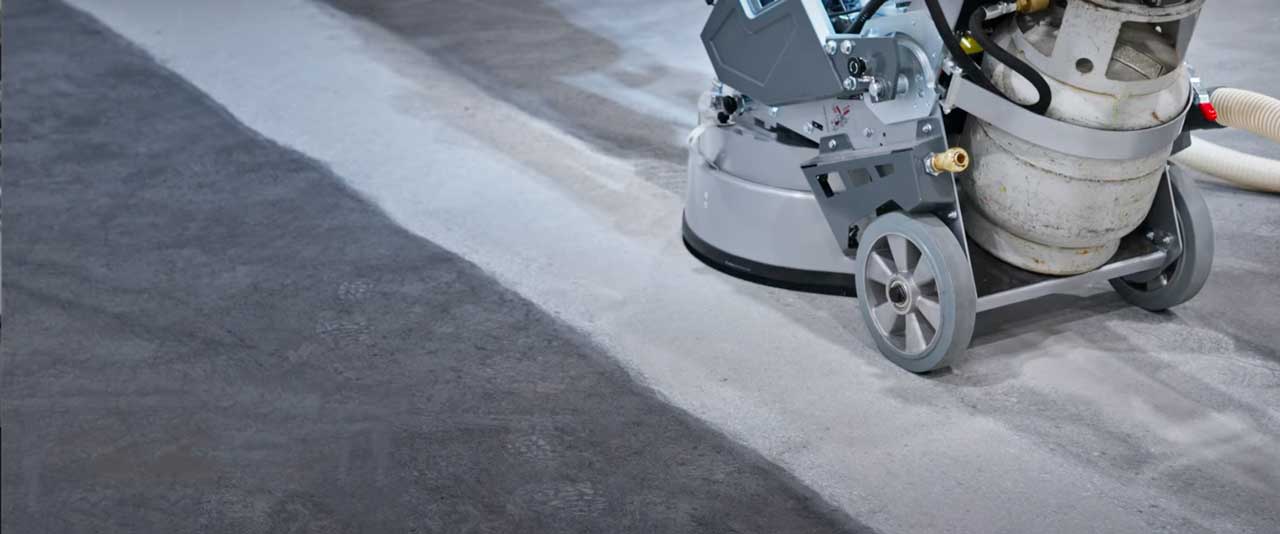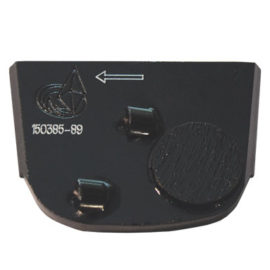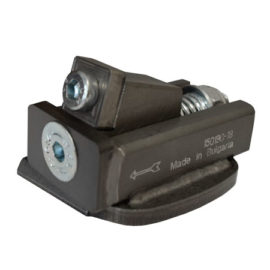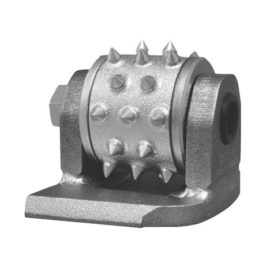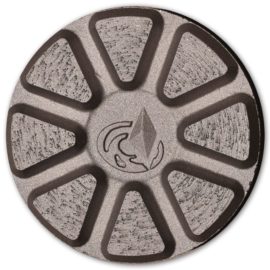Lavina metal tools are offered with one or two segments – use single segment tools with grinders 25″ and smaller, and double segment tools with grinders 30″ and larger. Fewer segments cut faster, but also wear out faster. More segments create more surface contact, allowing for surface refinement with less scratches.
To expose medium to large aggregate, you can usually start with 30 grit metals (or bush hammers for fastest results). For small to medium aggregate – start with 70 grit metals. For salt and pepper – 120 grit metals.
MOHS’ SCALE AND LAVINA METAL BONDS
- YELLOW SERIES for SOFT CONCRETE
(under 2500 psi, Mohs Scale 2-3) - GREY SERIES for MEDIUM CONCRETE
(2500-4000 psi, Mohs Scale 3-5) - RED SERIES for HARD CONCRETE
(4000-5500 psi, Mohs Scale 5-6) - GOLD SERIES for EXTRA HARD CONCRETE
(5500-7000 psi, Mohs Scale 7) - WHITE SERIES or BLACK CAP CUTTERS for SUPER HARD CONCRETE
(7000-9000 psi, Mohs Scale 8-9)
GRINDING TIPS:
- SOFT CONCRETE is very abrasive and wears out the bond and diamonds faster. You should use a hard bond, such as the QC Yellow series, to avoid premature tool wear.
- HARD CONCRETE requires a soft bond tool, such as the Red, Gold and White bond, to avoid diamond glazing. Glazed diamonds slide on the concrete surface without cutting because there is not enough abrasion to keep them open. To unglaze and open the diamonds, you can try removing weights, adding water (mist) or silica sand (30 grit). If glazing continues, you should switch to a softer bond.
- We recommend using metals with LOW RPM, and for optimal tool life, use 6 tools per head on 13″ heads.
- Use QC tooling with Security Plates for safe operation.
HOW TO USE THE MOHS’ TEST KIT
A Mohs hardness test kit includes a set of pencils (or picks) with calibrated hardness values corresponding to the Mohs scale (2-9). Before starting, ensure the concrete surface is clean and free of sealers or curing compounds. The picks should be sharp and in good condition. We recommend to test in different locations to get a more accurate overall hardness value.
- Start with the pencil with the lowest hardness value (e.g., Mohs 2).
- Firmly press the tip of the pencil against the concrete surface and draw a line.
- Check if there is a scratch left behind.
- Increase the pencil hardness value (e.g., Mohs 3, 4, etc.) until you find the pencil that leaves a noticeable scratch.
- The Mohs hardness value of the last pencil that leaves a scratch is the approximate hardness of the concrete. The higher the Mohs hardness value, the harder the concrete. This test is not precise but provides a general idea of the concrete’s hardness, which can help guide the selection of appropriate tools and materials for concrete polishing and grinding.

